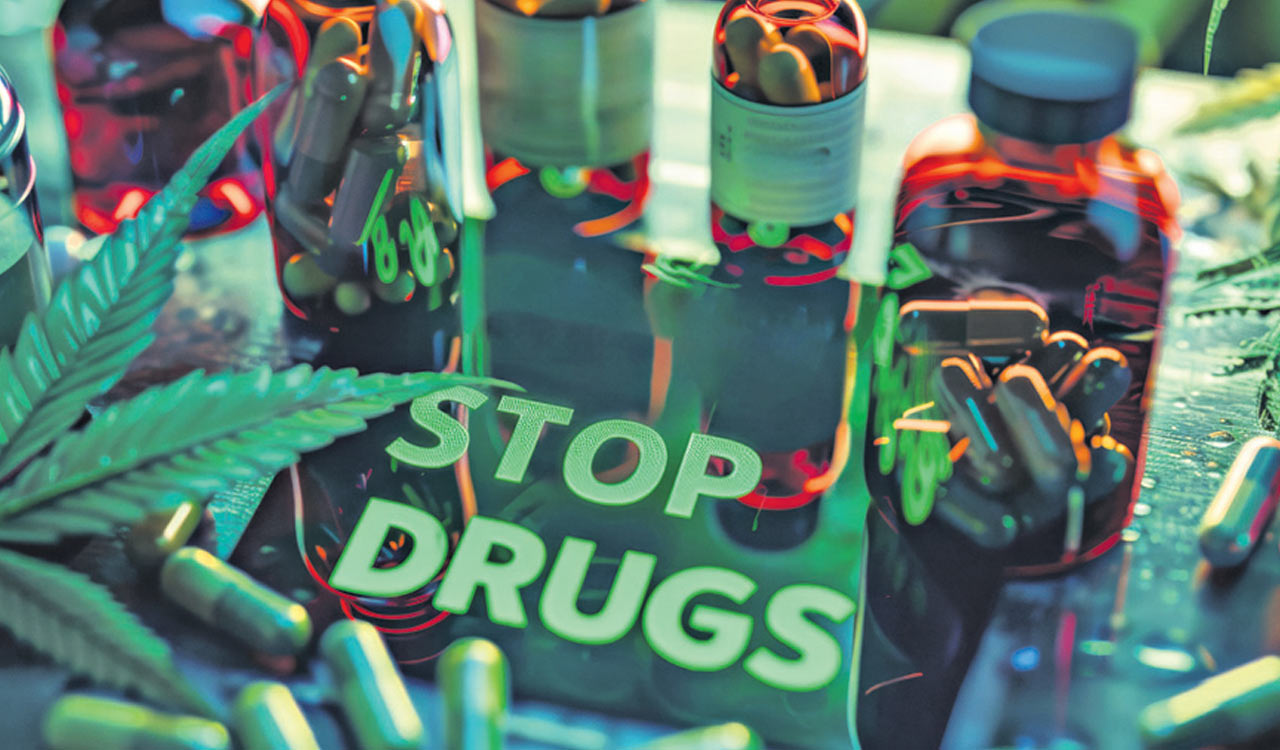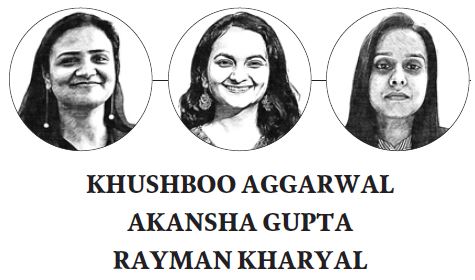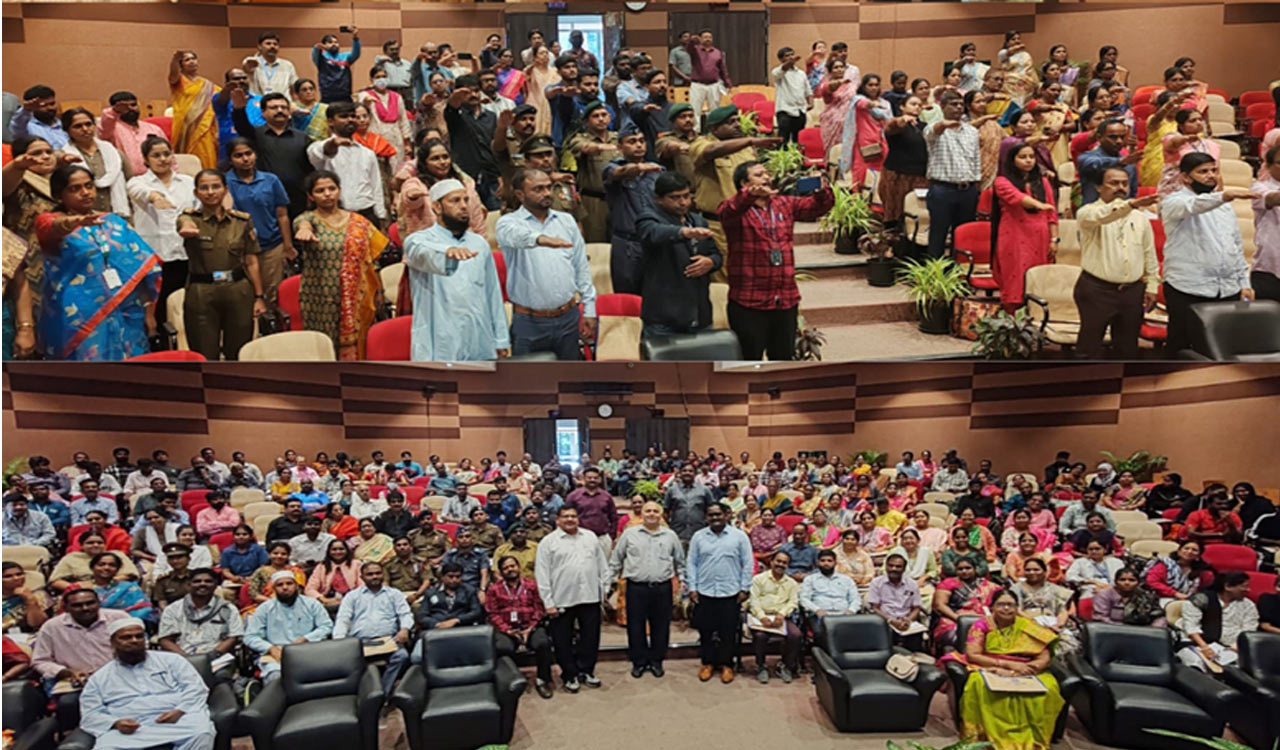Opinion: Fight against addiction
Eradicating substance abuse among adolescents is crucial for maintaining India’s growth trajectory

By Khushboo Aggarwal, Akansha Gupta, Rayman Kharyal
One of the most crucial and unaddressed concerns among adolescents is the prevalence of substance abuse, particularly among the male population of developed and developing countries like the US and India.
Substance abuse is defined as the consumption or administration of psychoactive substances, including alcohol, tobacco and illicit drugs, that can lead to dependence and harm to an individual’s physical and mental health, as well as social functioning and overall well-being (World Health Organisation 2022). According to the WHO, globally 90% of children have used at least one substance of abuse. Further, more than 5.3% of children in the age group of 15-16 years (13.5 million) have consumed cannabis in past years (World Drug Report 2023).
The Diagnostic and Statistical Manual of Mental Disorders (DSM-5, American Psychiatric Association) defines substance use disorder as a problematic pattern of substance use leading to clinically significant impairment or distress, as manifested by at least two of the following symptoms occurring within a year: impaired control over substance use, social impairment, risky use, and pharmacological criteria.
Prevalence and Impact
India is home to the highest number of children in the world which translates to approximately 440 million. The country’s demographic structure shows that more than 20% of its population belongs to 10-19 years of age (243 million). These adolescents will contribute to economic growth by actively participating in the labour market. However, to harness the benefits of its demographic dividend, the country needs to ensure the availability of key inputs such as quality health and education. An increase in the consumption of licit and illicit substances is an impediment to achieving quality health and education.
Engagement of youth is key to achieving Goal 16 (peaceful, just and inclusive societies) and Goal 17 (partnerships and implementation) of SDGs
Of the total adolescent population in India, 54% belong to the 10–14-year age group and the remaining are in the most vulnerable age group in which the child acquires academic, cognitive, social and life skills. (National Commission for Protection of Child Rights, 2013).
Substance use most commonly begins at the age of 12 or 13 and is rarely limited to alcohol. The general progression typically moves from the use of legal substances (tobacco, alcohol) to illegal drugs, with marijuana as the usual initial illicit substance (Brown University). In India, consumption of tobacco and alcohol has become common among adolescents, and in the case of tobacco, the age of initiation was observed to be as low as 12 years (National Commission for Protection of Child Rights).
Intake of harmful substances such as opioids, inhalants, sedatives, injected drugs and alcohol has increased at an alarming rate, especially among male adults. Smokeless tobacco usage has also become very popular in India owing to its easy availability and inexpensive price (Gupta and Ray, 2003). Moreover, the use of both smokeless and smoked tobacco, alcohol and cannabis (a psychoactive drug) is widely prevalent among adolescents residing in the slums.
Substance abuse might lead to adverse consequences in the long term such as poor health quality, loss of employment, displaying violent behaviour, and inclination towards violent crimes (Degenhard et al 2010; Dandona et al 2017). Additionally, the effect of substance abuse is highest on the psychological health of adolescents with the possibility of developing substance use disorder, leading to major behaviour changes, including mood disorders, depression, anxiety, and thought disorders such as schizophrenia, as well as personality disorders like antisocial traits.
The use of tobacco (nicotine) in adolescence and young adulthood poses a unique risk for long-term and long-lasting effects on developing brains as nicotine changes the way synapses are formed, harming the parts that control attention and learning. The brain continues to develop until about the age of 25 years and during adolescence, its growth is not complete and is susceptible to the damaging effects of tobacco smoke (Arora M, 2019).
While psychoactive substance use often tends to be framed as a problem or menace in the public health or social-welfare discourse, the exact dimensions and implications of substance abuse among adolescents have not been addressed adequately by authorities.
Addressing the Challenges
The Ministry of Health and Family Welfare, under the National Health Mission, launched the Rashtriya Kishor Swasthya Karyakram in 2014 to address the unique health needs of adolescents. It focuses on six key areas: preventing substance misuse, improving nutrition, preventing injuries and violence, enhancing mental and emotional well-being, and addressing non-communicable diseases. The Nasha Mukt Bharat Abhiyan was initiated in 272 vulnerable districts across 32 States/ UTs and now covers 372 districts. It aims to raise awareness about substance abuse among the youth, with a particular focus on higher education institutes, university campuses, schools and community engagement.
To further discourage tobacco use, the Ministry enacted the Cigarettes and Other Tobacco Products Act (COTPA) in 2003. Recently amended, the Act now includes mandatory health warnings in online tobacco content, targeting teenagers who are particularly vulnerable to social media influences. Under Section 77 of the Juvenile Justice Act, 2015, providing tobacco to minors can lead to up to seven years in prison and a fine of up to Rs 1 lakh. Additionally, Article 16 of the WHO Framework Convention on Tobacco Control bans the sale of loose tobacco to minors. The Prohibition of Electronic Cigarettes Act, 2019, prevents the initiation of nicotine use through electronic cigarettes, thereby reducing the risk of addiction.
After Punjab, Jammu & Kashmir has drafted a de-addiction policy aimed at eradicating substance abuse. This initiative is crucial as the UT has been experiencing a significant increase in substance abuse cases. Furthermore, the proximity of J&K to the “Golden Crescent” (which includes opium-producing countries like Afghanistan, Iran and Pakistan) has made it a prime area for the illegal drug trade.
Incorporating evidence-based interventions, such as life skills training, can help build resistance to peer pressure and reduce the initiation of substance use among adolescents. This aligns with economic theories that emphasise early intervention in human capital development to prevent future losses in productivity and earnings. The most effective way to get rid of addiction is through education at all levels, involving teachers, parents and the media to empower young people.
Research shows that parents’ consumption of substances can alter the perception of their children who may come to view these behaviours as normal. (Fletcher, JM 2012; Srivastava, S et al. 2021). Research on the harmful effects of substance abuse is a crucial tool in our fight against addiction. It is through this knowledge that we can make informed decisions and take effective action.
At present, India’s youth population contributes to approximately one-fourth of its total population. Their engagement is crucial for achieving Goal 16 (peaceful, just and inclusive societies) and Goal 17 (partnerships and implementation) of Sustainable Development Goals. The adolescent population in India is key to its welfare and growth, therefore, investing in their development and well-being will determine the growth trajectory India will achieve in the coming years.

(Khushboo Aggarwal is Maharishi Kanada Postdoc Fellow, Delhi School of Public Policy and Governance, Institution of Eminence, University of Delhi, Akansha Gupta and Rayman Kharyal are PhD Scholars, Delhi School of Economics and Ambedkar University respectively)
Related News
-
Cartoon Today on December 25, 2024
3 hours ago -
Sandhya Theatre stampede case: Allu Arjun questioned for 3 hours by Chikkadpallly police
4 hours ago -
Telangana: TRSMA pitches for 15% school fee hike and Right to Fee Collection Act
4 hours ago -
Former Home Secretary Ajay Kumar Bhalla appointed Manipur Governor, Kerala Governor shifted to Bihar
4 hours ago -
Hyderabad: Organs of 74-year-old man donated as part of Jeevandan
4 hours ago -
Opinion: The China factor in India-Nepal relations
5 hours ago -
Editorial: Modi’s Kuwait outreach
5 hours ago -
Telangana HC suspends orders against KCR and Harish Rao
5 hours ago




